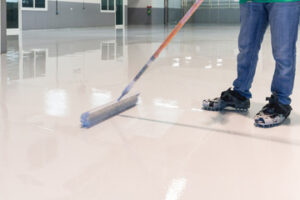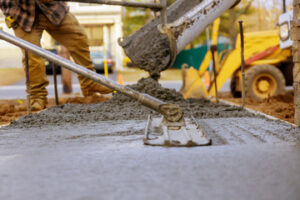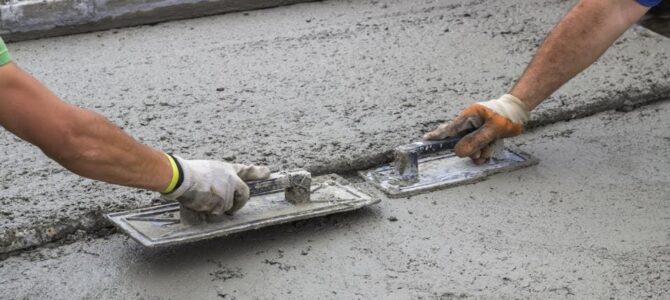A durable asphalt driveway is one of the most common paving options for homeowners. It offers reasonable durability at a middle-of-the-road price point.
The dark surface of asphalt hides oil spills, gas drips, and other automotive fluid stains well. It’s also easy to fix cracks in asphalt using rubber paving crack filler or hot-pitch asphalt repair products.
The first thing many people notice about your home is the exterior and landscaping, a knee-jerk reaction that can make or break how well the property sells. This is why many real estate agents stress the importance of curb appeal when describing properties to clients. However, the importance of a good front yard goes far beyond mere appearance. A neat and tidy lawn, shrubbery, garden, and driveway can increase safety, prevent damage to your vehicle and property, reduce the risk of slipping and falling, and keep criminals and trespassers away.
Boosting your home’s curb appeal doesn’t have to be expensive or time-consuming. For example, simply mowing the lawn, trimming overgrown bushes, and weeding your flower beds can significantly improve the look of a property without much work. Another simple way to add visual appeal is by adding a fresh layer of mulch. Finally, a quality, properly maintained asphalt driveway can be an asset to your property’s curb appeal.
When deciding on the best material for your driveway, consider its long-term value along with its installation price. Asphalt is one of the most popular choices among homeowners and offers reasonable durability at a mid-range price point. If you’re looking for a more visually appealing option, consider choosing porous asphalt that minimizes runoff and improves drainage.
If you’re thinking of selling your home, a new driveway can be a big investment that increases your property’s value. The resale value of an asphalt driveway is higher than that of a concrete driveway, but both offer long-term durability and aesthetics.
If you’re unsure of which material is best for your driveway, talk to your local paving professional. They can provide you with information on each type of paving and help you determine which one is the right fit for your budget, lifestyle, and property. They can also give you advice on maintenance and upkeep to help you get the most from your investment. Regardless of the material you choose, your driveway will be a big part of your home’s overall aesthetics, so choose wisely! For more tips on improving your home’s curb appeal, check out this article.
Durability
Asphalt is a popular material for driveways because it offers a great deal of durability. It can withstand heavy vehicles and repeated traffic. In addition, it’s easy to repair. Cracks and potholes are common, but they’re simple to fix with a layer of sealant or new pavement. You can also add a porous coating to your asphalt for added strength and water resistance. Porous asphalt is a great option for regions with high rainfall. It minimizes runoff and improves drainage.
It’s also worth noting that concrete driveways aren’t indestructible, despite being more resistant to damage than asphalt. Concrete can be damaged by extreme weather conditions and poor installation. For example, concrete may crack or heave in colder climates because of constant freezing and thawing. Additionally, road salt can pit, stain, and etch concrete surfaces.
Concrete’s durability is also impacted by its porosity. Water seeps through and into cracks, which can cause them to widen over time. It’s important to inspect your concrete driveway regularly and to perform routine maintenance, including cleaning and sealing.
Another factor to consider is the climate where you live. Concrete can crack, heave, or buckle in cold climates, while road salt can degrade it over time. Asphalt is a better choice for areas with changing weather patterns because it resists freezing temperatures and the freeze-thaw cycle.
The main drawback of asphalt is that it absorbs heat and can become hot in the summer. This makes it difficult to walk on barefoot or touch with uncovered hands. It’s also less customizable than concrete, although manufacturers are starting to incorporate recycled materials into asphalt mixtures and offer colored sealants to create a more visually appealing finish.
An asphalt driveway requires regular maintenance, but it’s usually easier to manage than a concrete one. It should be resealed every three to five years, and you should clean it frequently to avoid oxidation. Keeping it in good condition can help it last for 20 to 30 years. You should always look for signs of wear and tear, such as loose or crumbling pieces or puddles of oil. If you notice these problems, you should have your asphalt professionally repaired or replaced as soon as possible to prevent further damage.
Noise Reduction
Asphalt is a versatile material and is used for a variety of purposes. Some examples include driveways, airport runways, tennis courts, schoolyards, bicycle paths, and more. This durable material is very affordable and easy to maintain. Asphalt is a great option for homeowners who want a long-term investment.
While the initial cost of asphalt paving is slightly higher than other materials, it has many benefits that can offset the upfront investment. Some of these benefits include the ability to reduce traffic noise, safety improvements, and environmental sustainability.
Quieter pavement is a great solution to improve the quality of life for residential neighborhoods near highways and other heavily trafficked roads. There are several ways to achieve quieter roadways, including sound barriers and walls, roadside vegetation, acoustic coatings, vehicle mufflers and fans, and porous and rubberized asphalt.
The primary benefit of a quieter roadway is the reduction in road noise pollution. This improvement in ambient noise levels can lead to improved sleep quality, lower stress levels, and enhanced living conditions for urban residents. The reduced level of ambient noise also supports active transportation, encouraging residents to choose healthier, environmentally friendly means of transportation.
Another way that noise-reducing asphalt benefits the environment is through its use of eco-friendly materials and sustainable production processes. Noise-reducing asphalt often utilizes recycled rubber and other waste products, which can help reduce landfill waste and align with green urban development initiatives. In addition, the high-porosity of this type of asphalt helps to increase water drainage and reduce the amount of spray on roads during wet conditions.
As mentioned above, an asphalt driveway is easier to maintain than one made from other materials, particularly concrete. Asphalt is also less susceptible to damage from the chemicals used to melt snow and ice on roads and highways. The dark color of asphalt absorbs the sun’s rays, reducing the amount of melting and freezing that occurs on the surface. This feature makes it easier for snowplows to remove the melting ice and snow from roadways, thereby avoiding accidents and delays.
Low Maintenance
Asphalt is a more affordable material than concrete, making it an ideal option for those on a budget. Additionally, asphalt can withstand heavier loads than concrete, meaning you can safely park trailers, boats, and other vehicles on your driveway. Asphalt is also resistant to the freeze-thaw cycle and de-icing salts, which helps it stay durable in cold climates.
In addition, asphalt is easy to repair and resurface. It’s also less prone to cracking than concrete, especially if it is regularly maintained with routine resealing and sweeping. Its dark color hides engine oil, gas drips, and stains well, which reduces maintenance costs. Asphalt is also environmentally friendly, since it uses petroleum products as its adhesive base and requires less energy to produce than concrete.
Another advantage of asphalt is its ability to absorb noise. This can help keep your family and neighbors peaceful by reducing the jiggling sounds made by parked cars as they drive down your driveway. This kind of pavement is particularly useful for areas that experience a lot of traffic, such as an apartment complex or shopping center parking lot.
Asphalt can also last longer than concrete, depending on the severity of the climate and how often you use your driveway. However, both materials need regular resealing and resurfacing to prolong their lifespans.
The dark color of asphalt also reflects sunlight, which makes it cooler to walk on in hot weather. This can help to save on cooling costs for your home.
Unlike concrete, which is sensitive to temperature changes and can crack easily, asphalt is more flexible. This means it can withstand the freeze-thaw cycle and snowplows better than concrete. It’s also more likely to withstand extreme heat than concrete. However, this flexibility can cause it to soften and become sticky in the summer. This can be a problem if you need to drive on the driveway during this time. Fortunately, this problem can be avoided by resurfacing the asphalt regularly. A good paving contractor can advise you on how often this should be done. Occasional power washing and degreasing are also necessary to maintain a clean appearance.





